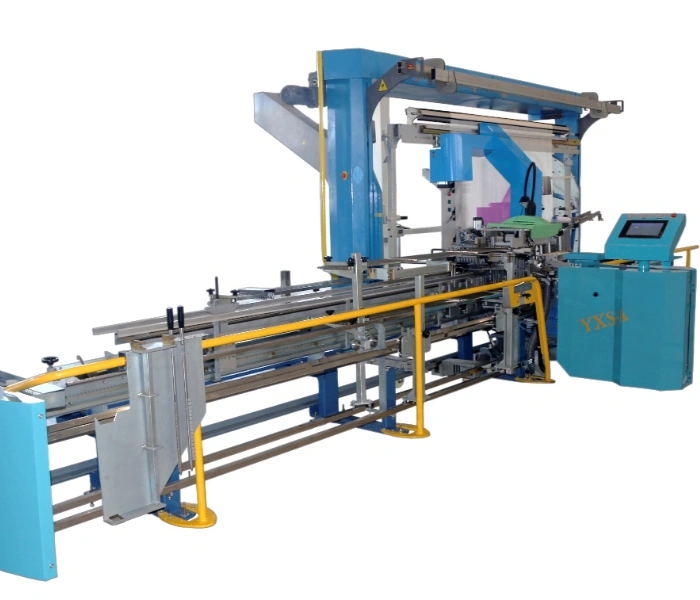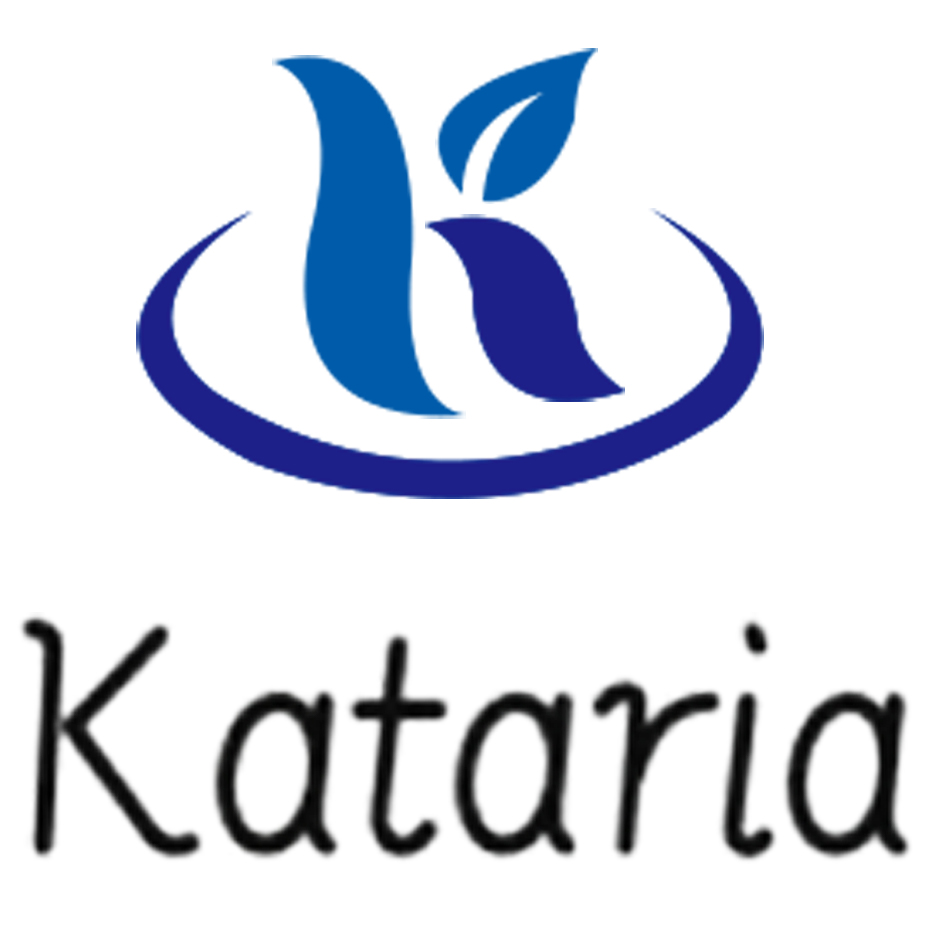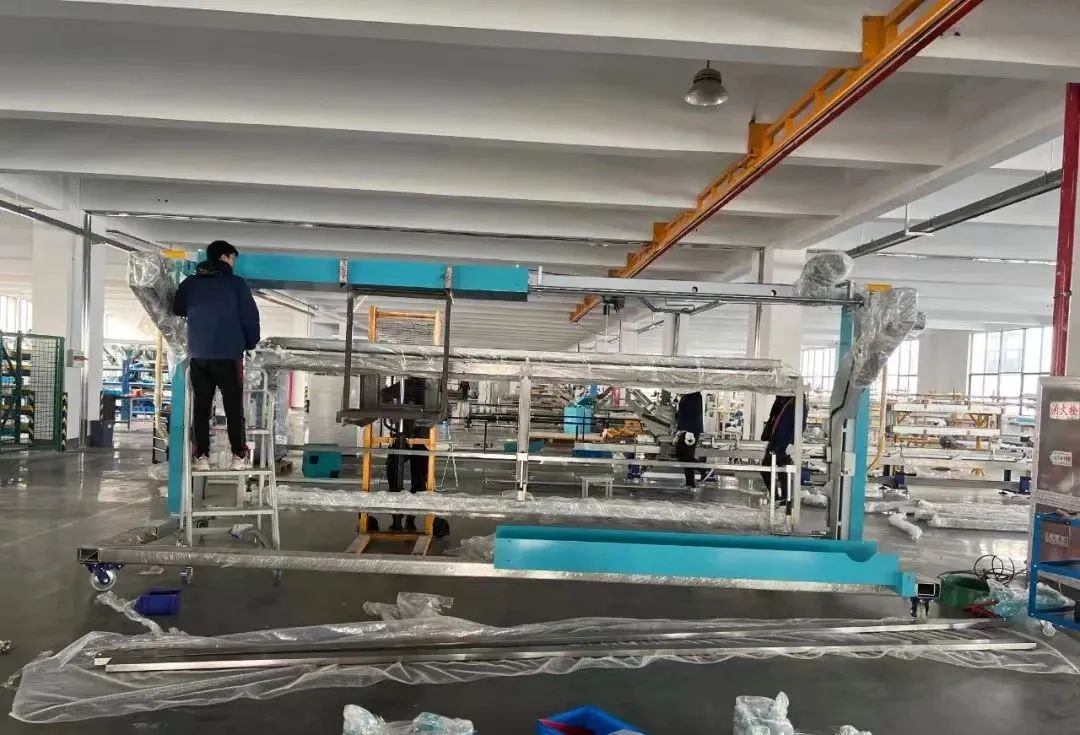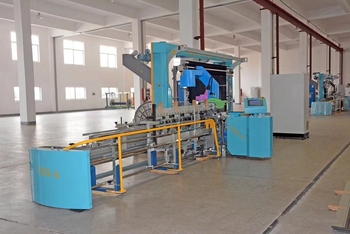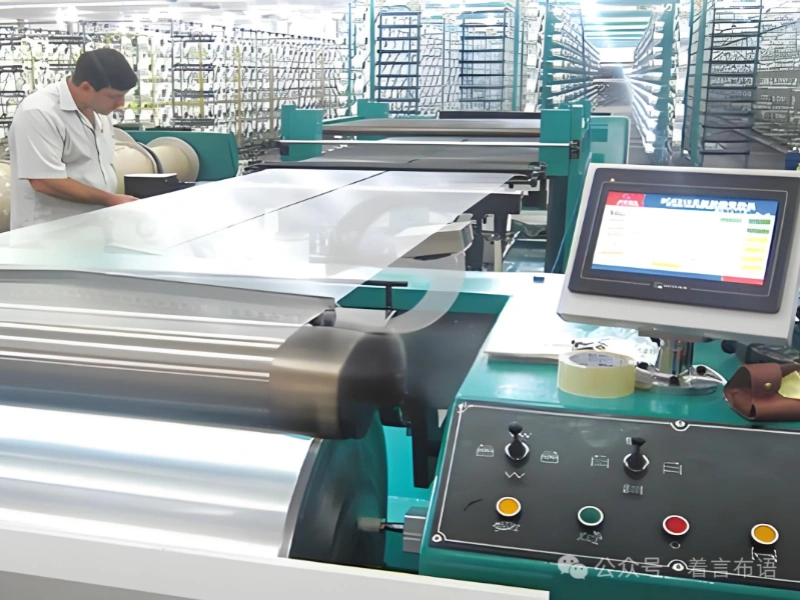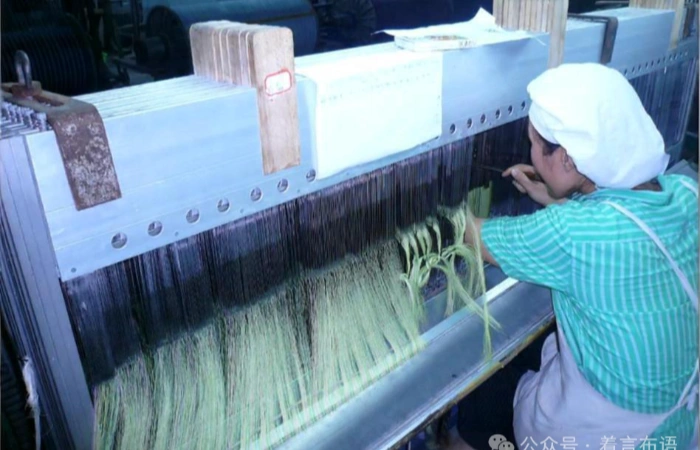Automatic Drawing-in Machine Revolutionizes Yarn-Dyed Fabric Production
2025-10-24
Recently, at the 2025 China International Textile Machinery Exhibition, a number of automatic drawing-in machines equipped with intelligent technologies have attracted great attention from the industry. According to statistics from the exhibition organizer, the purchase volume of automatic drawing-in machines by yarn-dyed fabric enterprises has increased by 120% year-on-year since the beginning of this year, making them a "star equipment" in the intelligent transformation of the textile industry. This equipment, which integrates mechanical automation and intelligent control technologies, is breaking the long-standing production bottlenecks of the yarn-dyed fabric industry with its three core advantages of "cost reduction, efficiency improvement, and quality enhancement". It injects new vitality into the traditional industry and accelerates the high-quality development of China's yarn-dyed fabric industry.
Over 300% Efficiency Increase, Delivery Cycle Halved In yarn-dyed fabric production, "drawing in" is a key process connecting warp preparation and weaving. It requires accurately threading thousands of warp yarns of different colors and specifications through drop wires, healds, and reeds. Its efficiency and precision directly determine the subsequent production rhythm. For a long time, this process has relied on manual operation. Data from the New Think Tank Industry Research Center shows that a skilled worker can only complete 800-1200 warp yarn draw-ins per day on average. Moreover, manual operation is prone to fatigue and visual errors, leading to disordered warp arrangement and uneven tension. This has become a core bottleneck restricting yarn-dyed fabric enterprises from responding to the market demands of "small batches, multiple patterns, and fast delivery".
The application of automatic drawing-in machines has completely changed this situation. Such equipment integrates machine vision, servo control, human-computer interaction and other technologies. It can accurately locate the position of the reed, identify single and double yarns precisely, monitor the production status in real time, and support manual intervention. Taking the domestic YXS-A type automatic drawing-in machine as an example, its yarn drawing speed reaches 140 yarns per minute, and the converted daily average number of warp draw-ins can reach 3000-4000, which is more than 300% higher than that of manual operation. For high-end overseas models such as the Stäubli SAFIR PRO S67 high-speed automatic drawing-in machine, the efficiency can even exceed 5000 yarns per day when dealing with large-batch orders.
"In the past, when we received urgent orders, 5 drawing-in workers worked non-stop but still couldn't keep up with the progress. Now, one piece of equipment can replace the workload of the original 5 workers," said Li Hongyu, production director of Dongying Pengjie Yarn-Dyed Fabric Co., Ltd. After the enterprise introduced the automatic drawing-in machine, the pre-production cycle was shortened from 20 days to less than 10 days, and the ability to respond to urgent orders was significantly improved. A survey by the China Textile Machinery Association shows that for yarn-dyed fabric enterprises that have applied automatic drawing-in machines, the average pre-production cycle has been shortened by 35%-50%, effectively solving the "rush work anxiety" under the traditional production mode.
The core competitiveness of yarn-dyed fabric products lies in "accurate patterns and clear textures", and the precision of warp arrangement directly affects the quality of the final product. In the traditional manual drawing-in process, problems such as disordered warp sequence and missed threading caused by operational errors have kept the industry's defect rate at 5%-8% on average. This not only causes waste of raw materials but also restricts enterprises from breaking into the high-end market.
Automatic drawing-in machines build a quality assurance system through multiple intelligent technologies: They adopt high-definition industrial cameras and AI image recognition algorithms, with a warp recognition accuracy of 0.01mm, which can check problems such as disordered sequence and missed threading in real time; they are equipped with a constant tension control system, which can automatically adjust parameters according to different materials such as cotton, linen, silk, and chemical fibers, controlling the tension deviation within ±2cN to avoid yarn breakage during weaving; the built-in data traceability system can record the production parameters of each batch, enabling accurate traceability of quality problems.
The practice of Jiangsu Taimushi Knitting & Textile Technology Co., Ltd. has confirmed this effect. After the enterprise introduced automatic drawing in equipment during its intelligent transformation, the defect rate of yarn-dyed fabrics dropped from 6.5% to less than 1.2%, and the pattern accuracy increased to 99.8%. "In the past, customers often complained about 'deviation between the pattern and the sample', but now such problems have basically disappeared," said Yang Min, general manager of the company. Relying on quality upgrading, the company's products have successfully entered the supply chain of high-end clothing brands. The unit price of the products has increased by 25% compared with before, and the customer repurchase rate has risen from 60% to 85%.
Under the general trend of "cost reduction, efficiency improvement and green transformation" in the textile industry, automatic drawing-in machines have brought significant economic and environmental benefits to enterprises. In terms of labor costs, one automatic drawing-in machine can replace 3-5 skilled drawing-in workers. Based on the average monthly salary of 6,000 yuan for workers in the textile industry, a single piece of equipment can save an average of 216,000-360,000 yuan in labor costs per year. In terms of raw material loss, data from Jiangsu Yuanda Textile Group shows that after introducing intelligent drawing-in equipment, the loss of warp yarns has been reduced by 60%. Combined with the reduction in defect rate, the enterprise saves more than 800,000 yuan in raw material costs every year.
The advantages in green production are also prominent. Modern automatic drawing-in machines adopt energy-saving motors and intelligent sleep systems. Their operating power consumption is 30% lower than that of traditional auxiliary equipment, and the standby power consumption is only 15% of that of traditional equipment. Calculations by Yuanda Textile show that a single automatic drawing-in machine can save about 12,000 yuan in electricity costs per year. At the same time, due to the reduction in raw material loss, the amount of textile waste generated has decreased by 40%, which is in line with the green production concept of "reduction and resource utilization".
With the continuous breakthroughs in domestic technologies, the automatic drawing-in machine market is ushering in a wave of domestic replacement. In the early days, Chinese yarn-dyed fabric enterprises mostly relied on imported brands such as Stäubli from Switzerland, which had high equipment prices and long investment payback periods. Now, domestic enterprises such as Yongxusheng Electromechanical and Haihong Equipment have achieved technological breakthroughs. Their YXS series and HDS series products are close to imported products in core indicators such as drawing-in speed and recognition accuracy, while their prices are only 60%-70% of those of imported products, and their market penetration rate is constantly increasing.
